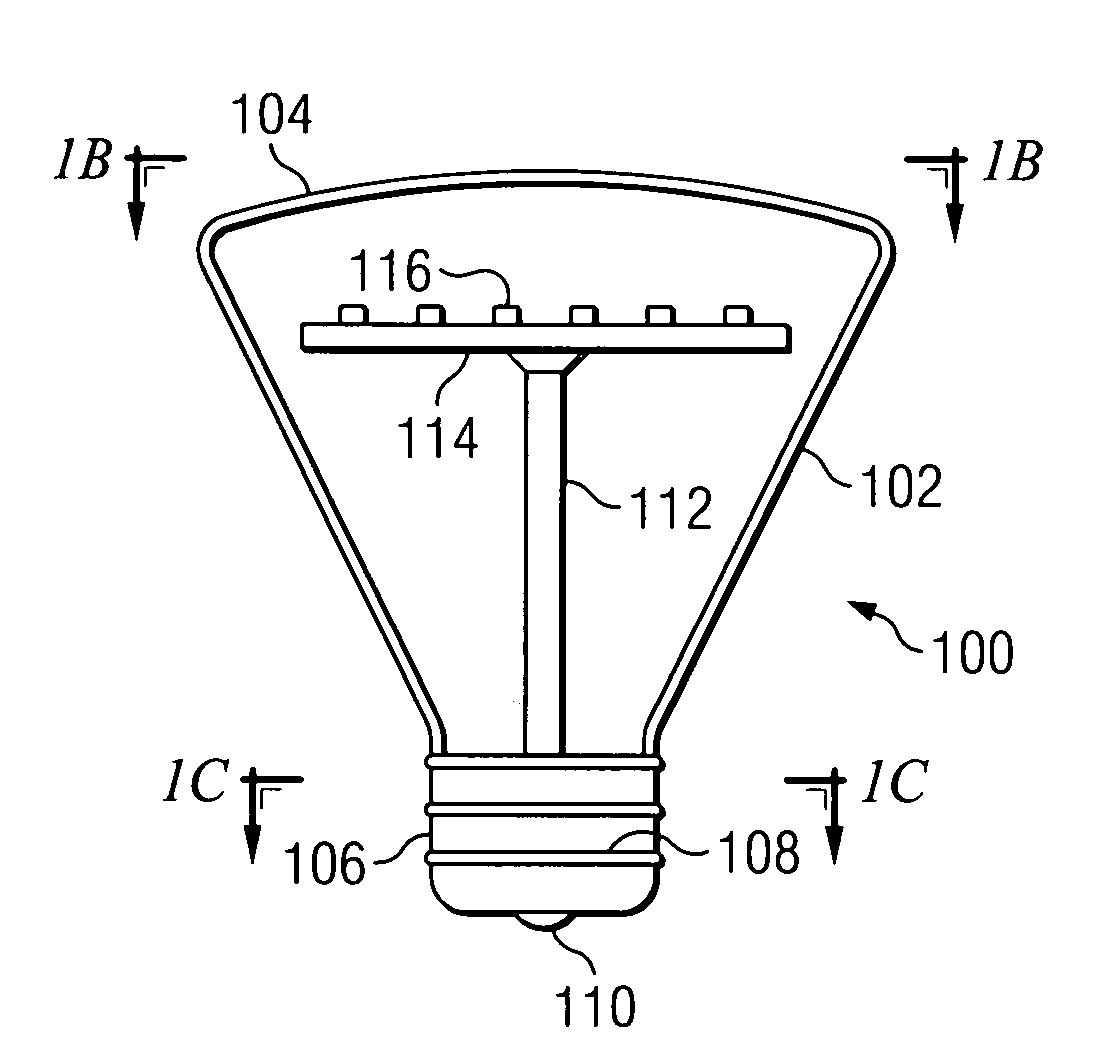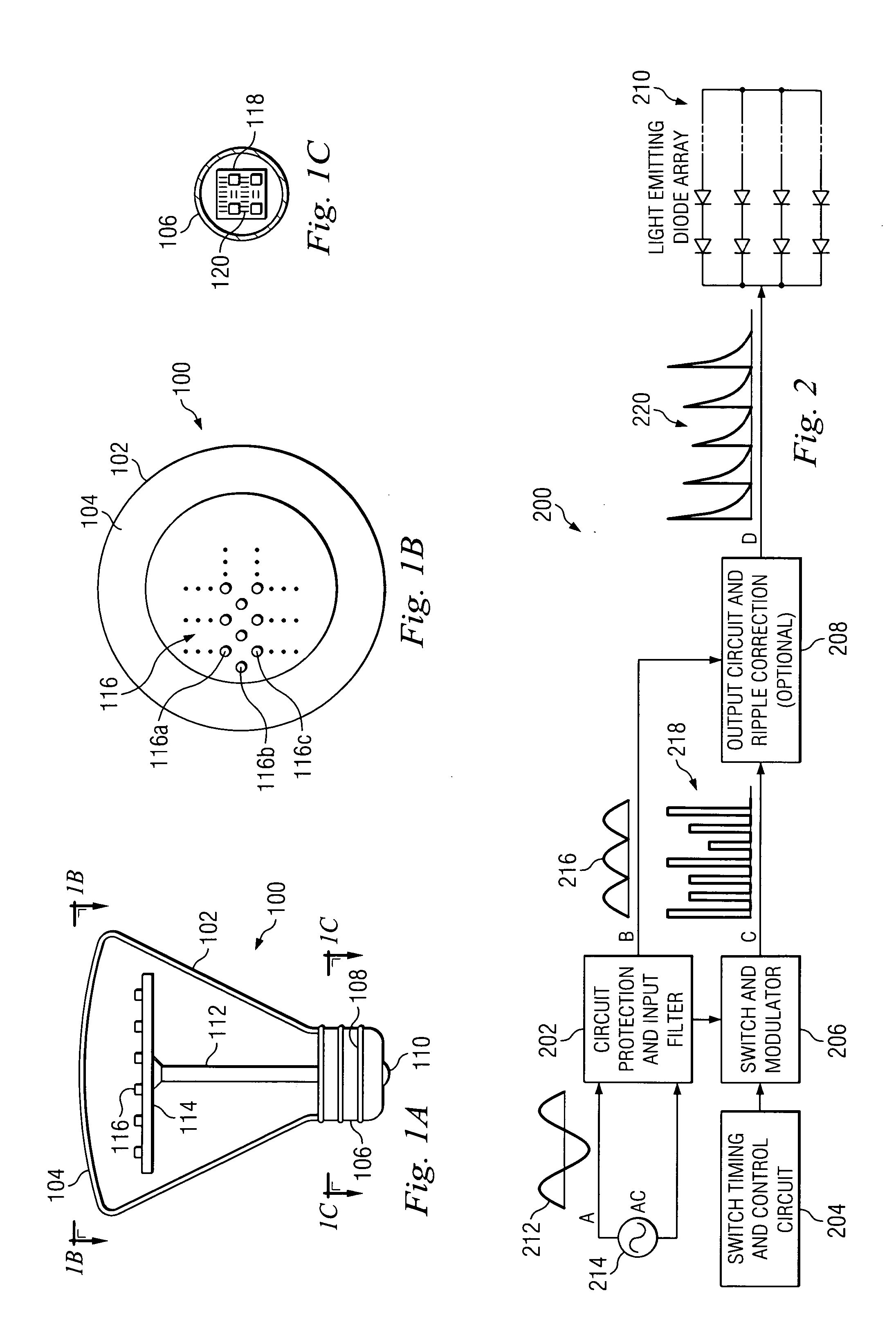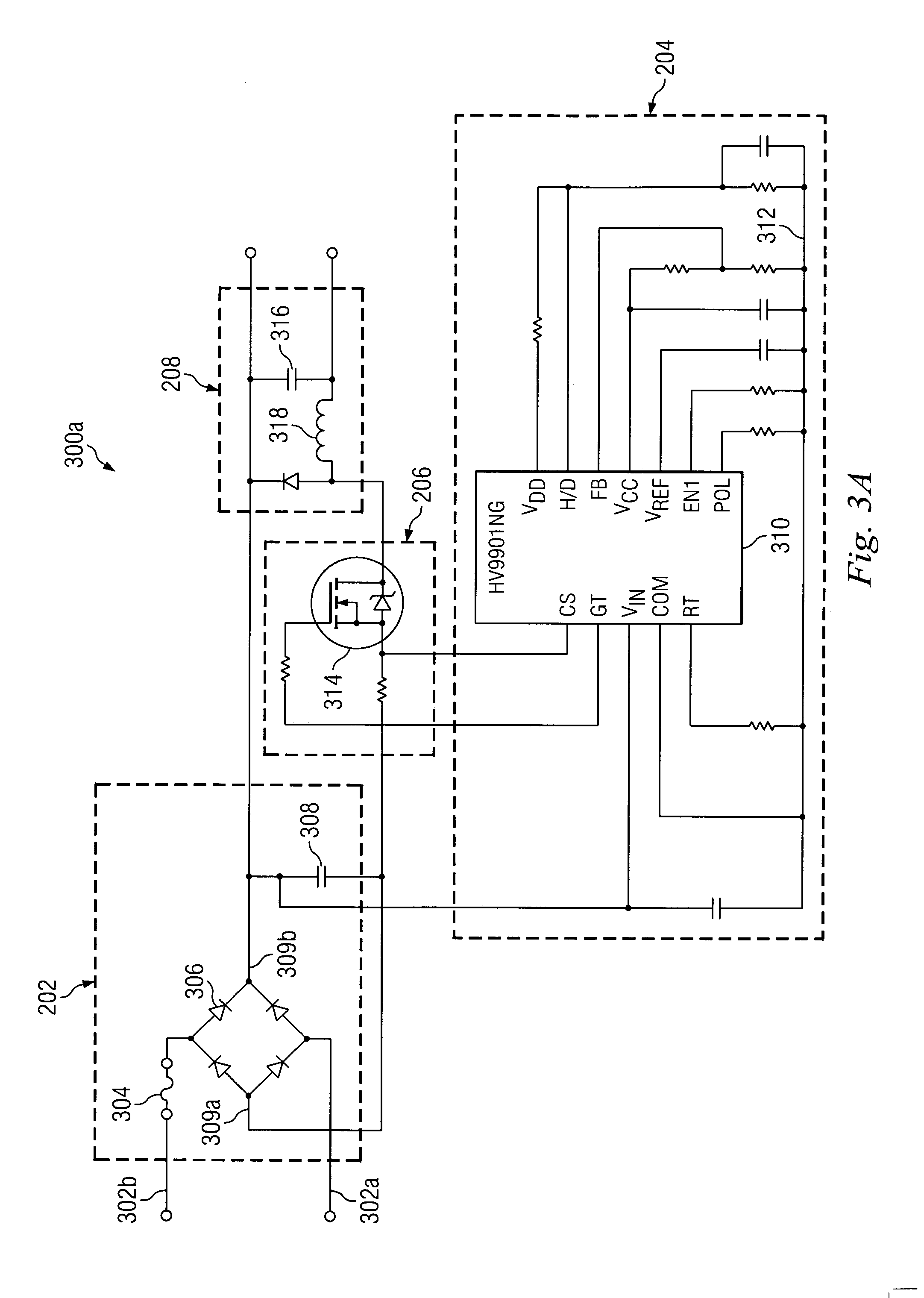Electronic light generating element light bulb
- Summary
- Abstract
- Description
- Claims
- Application Information
AI Technical Summary
Benefits of technology
Problems solved by technology
Method used
Image
Examples
Example
DETAILED DESCRIPTION OF THE DRAWINGS
[0027]FIG. 1A is an illustration showing an exemplary electronic light generating element light bulb (“electronic light bulb”). The electronic light bulb 100 includes a housing formed of a tapered wall 102 and an outer cap 104. Although shown as a tapered wall 102, it should be understood that other non-tapered or more tapered configurations maybe utilized in forming the housing of the electronic light bulb 100. In one embodiment, the outer cap 104 is translucent. Alternatively, the outer cap 104 may be clear. Still yet, in another embodiment, the outer cap 104 may be formed of a lens that focuses, defocuses, diffuses, narrows, broadens, or performs some other optical function to the light being generated by electronic light generating elements within the electronic light bulb 100. The housing may further include a base 106 that engages or is coupled to the outer wall 102. The base 106 may be formed as a “Edison base” for connection to a conventi...
PUM
 Login to view more
Login to view more Abstract
Description
Claims
Application Information
 Login to view more
Login to view more - R&D Engineer
- R&D Manager
- IP Professional
- Industry Leading Data Capabilities
- Powerful AI technology
- Patent DNA Extraction
Browse by: Latest US Patents, China's latest patents, Technical Efficacy Thesaurus, Application Domain, Technology Topic.
© 2024 PatSnap. All rights reserved.Legal|Privacy policy|Modern Slavery Act Transparency Statement|Sitemap



